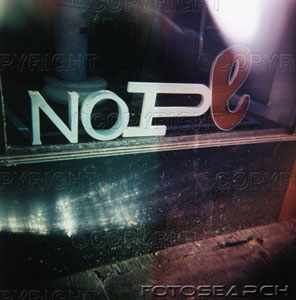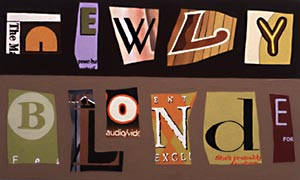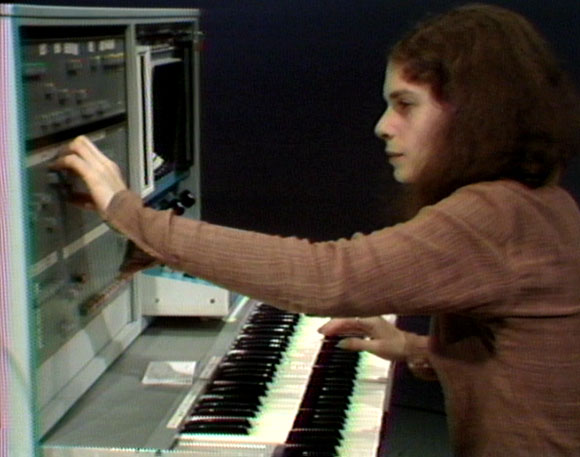View current page
...more recent posts
"Brakin' (Remix 2--Get Me to Lee Miles Mix)" [mp3 removed]. John Parker remix of my Mac SE tune (and my mix of his mix, etc.--this has been traded back and forth a few times). Still work in process--we're still composing and editing this piece, but I like this stage.
I'm actually not sure who bloggy and Tyler Green are taking sides with in the Jack Pierson vs Barneys dustup. Barneys supposedly "forged," for its store displays, its own set of Pierson's "trademark" sculptures made out of found sign letters. Pierson is mad, and his gallery Cheim & Read wrote a pedantic letter to the clothier that stops short of asserting an actual intellectual property right but nevertheless accuses the retailer of a "fraudulent situation."
But given that those kinds of sculptures are commonplace--you see them in craft fairs, regional art shows, and T.G.I. Friday's-calibre restaurants--that's a bit like Duchamp writing an indignant letter to a urinal manufacturer. As long as the accusations of "fraud" are flying around, why doesn't Pierson have his gallery write an outraged screed to the stock photography company selling this royalty free image:

Or maybe sling a fraud allegation at painter Leslie Brack while he's at it?


OHM: the Early Gurus of Electronic Music, a 3-CD collection of groundbreaking analog and digital music up to about 1980, was recently re-released with an added DVD. The best moments are the documentary films and interviews; the weakest are the many attempts to wed visual art with music. Highlights:
--Edin Velez's grainy documentary video of Mother Mallard's Portable Masterpiece Company trucking their several tons of Moogs to NY for a live gig in 1976. Their Terry Riley-ish composition "Water Wheel" is heavenly. Three keyboardists play all the "loops" live. Nowadays music like this could be done with a laptop and a freeware sequencer, but it just wouldn't...be...the...same.
--Laurie Spiegel playing the Alles digital synthesizer (PDF), another monster piece of gear from the '70s (see above). Very reedy, pleasantly artificial, FM (frequency modulated) notes issue from this NASA-looking contraption.
--Interview with Bebe Barron, one of the Forbidden Planet scorers, who mentions that Harry Partch had been hired by the studio to do the music and then fired when Bebe and her husband Louis were brought on board. Ouch! Their score is great--still hard to believe something so unmelodic got past the studio heads--but for Partch the loss of cash (if nothing else) can only have hurt.
--Interview with Milton Babbitt, about the early days of the Columbia Princeton Electronic Music Center.
Paul Lansky's score for Grady Klein's animated cartoon "The Dust Bunny" grabs your attention from the first note. The cartoon, resembling Pixar on a budget and chronicling the battle between a robot vacuum cleaner and the eponymous dustball, is too cutesy by half--we've seen this Tom & Jerry schtick so many times it's impossible to make it fresh. Listened to Lansky's music again with the cartoon minimized and realized how much depth it added to the animation. It's film-music-like--at one point recalling Stewart Copeland--but has a life of its own as a composition straddling the post-serial academic and pop entertainment worlds. Also very FM-sounding, with an intriguing lack of "attack transients" (the gritty, white noisy sounds usually heard at the beginnings of notes): the tones were eerily smooth even when the score was at its most boisterous (the sharp attacks all came from the Foley track, a clatter of goofy sound effects done by someone else). Many strange digital synthesis sounds (alien drones, scary glissandos) were slipped into the conventional-style orchestration. There is something very powerful, very melancholy in the music--an undertow, hard to put your finger on.
The visuals on the OHM DVD designed to "go" with music mostly failed to attain its "condition," as a Modernist might say. From tepid "state of the art" computer animation to old-school gelatin-on-the-overhead-projector psychedelia, the imagery was consistently outclassed by the emotional, expressive power of the sounds. Far better examples of synesthetic combinations can be found on the recent Kraftwerk tour DVD Minimum-Maximum, but that's another post.
